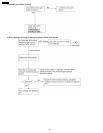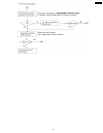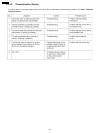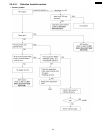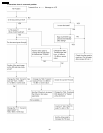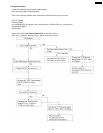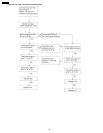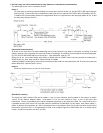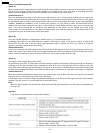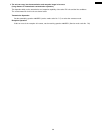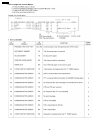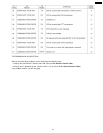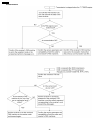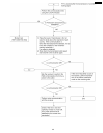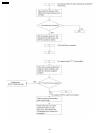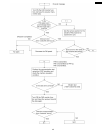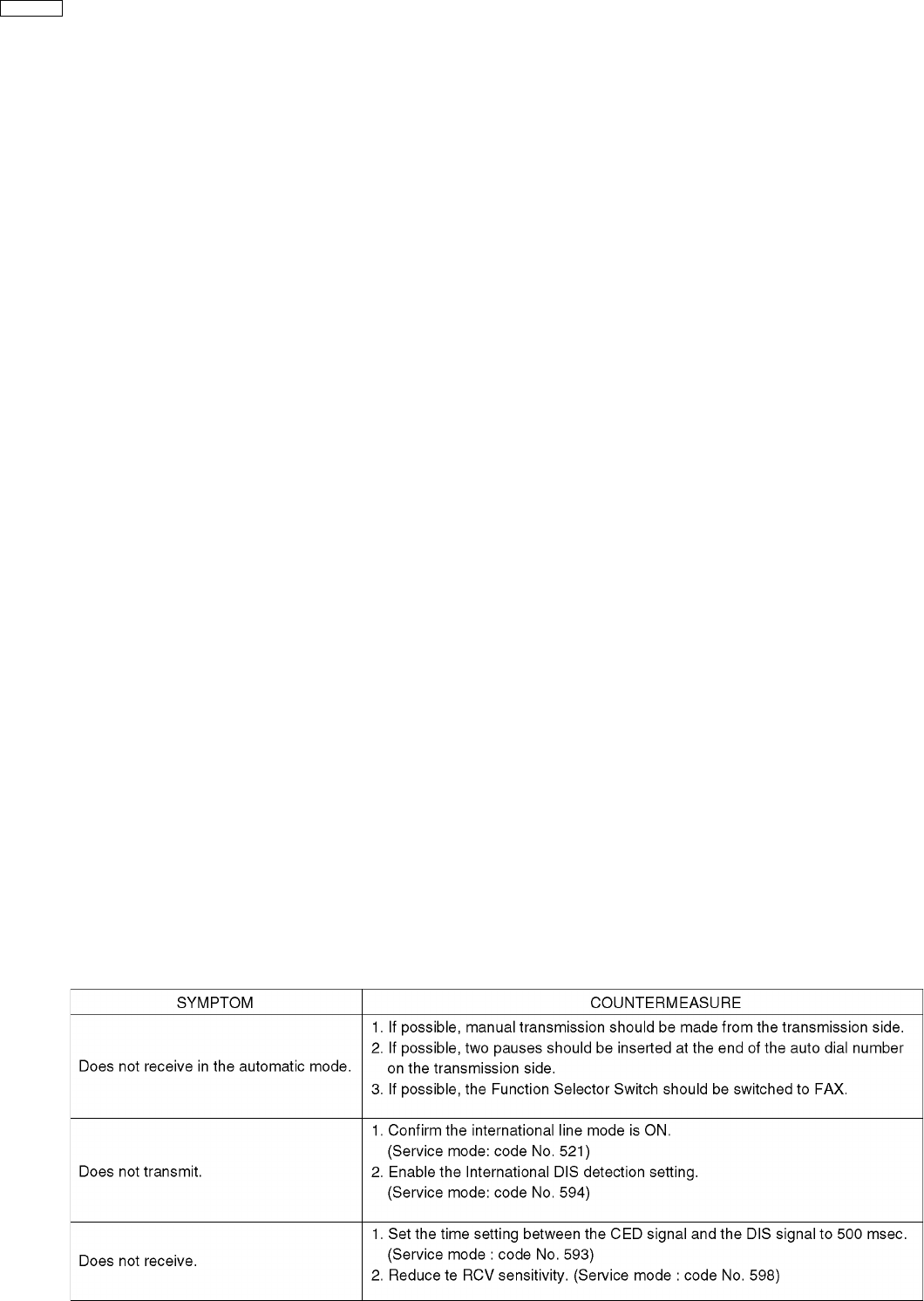
(Causes and Countermeasures)
(Cause A)
When a training signal is transmitted from FAX1 during the communication procedure at the time of transmission from FAX1
toFAX2, there is a delay until the echo canceler operates. S1 is closed so that a part of the head of the training signal may
dropout. Normal reception by FAX2 may not be possible, and transmission may not be started.
(Countermeasure A)
When the international line mode is ON in the service mode (code No. 521), a dummy signal is attached to the head of the
training signal to prevent this problem. As this normally is ON, it is necessary to reconfirm that this has not become OFF. When
the international mode is switched OFF, the transmission side will try the training signal three times at each speed (9600BPS,
7200BPS, 4800BPS and 2400BPS). If NG, it will drop the speed by one rank (fall-back). When the international mode is
switched ON, each speed will be tried only twice. In other words, the slower speed with fewer errors can be accessed more
easily. This is done because the line conditions may deteriorate and the picture may be affected more easily during
communication for international lines or long distance communication, even when the training is OK. The default value is ON
as preference is given to clearer pictures rather than speed.
(Cause B)
The echo canceller operation is stopped with a 2100Hz signal (i.e. S1 and S2 become ON).
Accordingly, when FAX1 has executed automatic reception, a CED signal is output. If this signal is 2100Hz, S1 and S2 will
become ON. Then the echo of the DIS signal output afterwards may be received and FAX1 may execute an erroneous
operation, preventing communication from starting.
(Countermeasure B)
In the service mode, the time setting between the CED signal and the DIS signal is set from 75 msec to 500 msec in the service
mode (code No.593). This is because the echo canceller operation stop mode is cancelled by an interval of 250 msec or more.
Reduce receiving sensitivity to reduce the effect of RCV echo signal. (service mode: code No. 598)
(Cause C)
This model is FAX1 and the other party is FAX2.
For transmission from FAX1 to FAX2, FAX2 executes automatic reception and transmits a CED signal (2100 Hz) followed by
a DIS signal. As the echo cancellers stops as described in cause B, the echo of the DIS signal returns to FAX2. On the other
hand, FAX1 detects the DIS signal and transmits a DCS signal. In other words, it is possible that the echo of the DIS signal and
the DCS signal transmitted from FAX1 reach FAX2 one after the other. FAX2 detects an error and communication is not started.
(Countermeasure C)
When the international DIS detection setting is set in the service mode (code No.594), FAX1 does not respond to the first DIS
signal and returns a DCS signal only for the second DIS signal.
In other words, there is an interval of 250 msec between transmission of first and second DIS signal so that the echo cancellers
operation recovers. An echo is not generated for the second DIS signal.
Note:
When the other FAX does not respond with a DCS signal after DIS signal transmission, the DIS signal is transmitted three
times for trial.
Summary:
Long distance and international communication operation
38
KX-FT21RS



